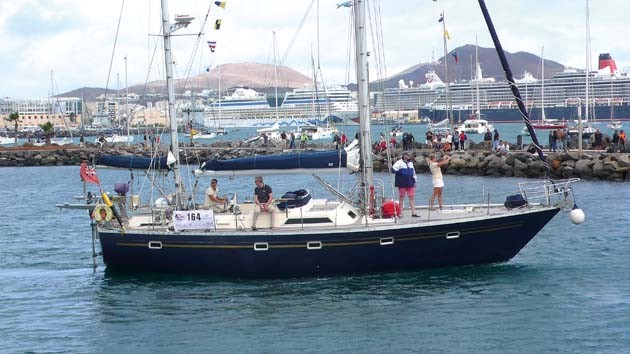Yacht Magritte sank in December 300 miles west of the Cape Verdes. These clips show the crew's plight as they wait for rescue
In the early evening of 3 December, Steve Arnold, the skipper and owner of the yacht Magritte, was awoken by friend and crewmate Andy Mills. Mills had come down and looked in the engine room and had noticed water in the bilges. More than there should have been.
Arnold was off watch and had been sleeping. Magritte, a 44ft (13m) Moody Grenadier 134 ketch was sailing along well in 15-20 knots of wind, with gusts higher than that, under poled out genoa and mizzen. The swell was 4-6m and Magritte was rolling along, but there had been nothing to suggest a problem. But when Steve Arnold got up and lifted the sole boards he immediately saw the problem. “The bilges were fuller than I had ever seen them,” he says.
“I immediately figured it was a through hull fitting. I had a diagram [of their location] at the chart table and we got it out and went through the boat turning them off,” he says.
First Report – Magritte rescued by a cargo ship hours before she sank.
He also made sure the bilge pumps were working, the automatic one and got the crew pumping out using the two manual pumps by the nav station and on deck. But it was soon clear that the level was not going down. Before long, he says, “I could see that the water was already a quarter of the way over the engine and about to start lapping over to the battery compartment.”
Over the course of that night, Magritte continued to sink. The water was not coming in through seacocks and Arnold and his crew could not locate the source. MRCC Cape Verde asked a nearby ship to divert to evacuate them. But their plight and the eventual rescue of the four crew posed great difficulty.
Steve Arnold tells us the whole story HERE.
These short video clips are among the few surviving items from Magritte, as the crew left with phones, passports, credit cards and the clothes they had been wearing that afternoon. They show the water sloshing over the floorboards.
By this time, the extra weight of water in the boat was already affecting its handling. The yacht was sluggish and beginning not to respond to the helm and soon the stability of the yacht would be compromised too.




